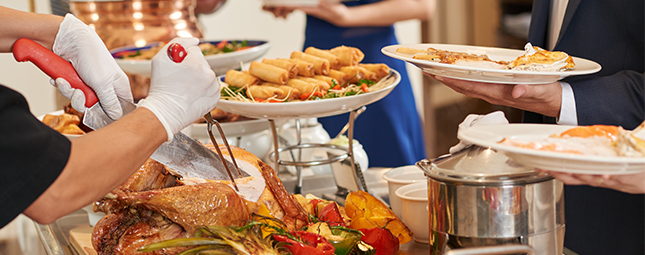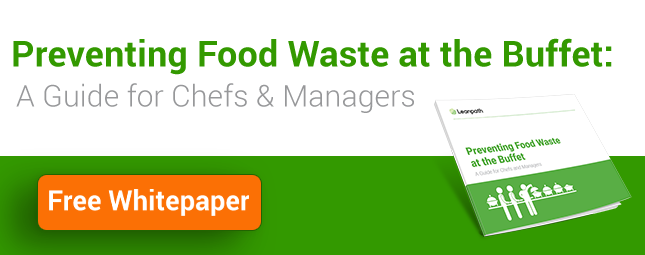6 Tips for Preventing Holiday Buffet Waste

Holiday buffets are a tradition – no matter what aspect of the hospitality industry you are in. It's a pleasure to cook for the masses and make their holidays unforgettable, but when each buffet is torn down, we must deal with all the leftover food. We all know that even with strong planning, overproduction will happen.
So, what can we do to control overproduction and avoid buffet food waste this holiday season? Here are a few tips that might help you make this busy time of year a bit more palatable (and don't forget to check out our new whitepaper Preventing Food Waste at the Buffet: a Guide for Chefs and Managers).
1. Plan your menus with repurposing in mind.
Write buffet menus that have foods you would normally serve on your menu. This gives you an opportunity to utilize the leftover prepped and cooked food in your business. Proper planning can help you anticipate what will be left after service, and you can get ahead of the game by designing menu specials before the leftovers even come through the window.
2. Plan the menu with as many action stations as you can.
If you have the room, and you have the labor, action stations are the best way to control food waste. Cooking to order a portion of the buffet will help control overproduction.
3. Put out proper sized plates to control over portioning.
Patrons eyes are usually bigger than their stomachs - especially over the holidays. Utilize small B & B or dessert plates for salad, appetizer, action, and dessert stations. This will help your guests control portion sizes and reduce plate waste.
4. Create a good flow with your food items.
Pre-portion as many items as you can for easy, controlled and faster service. Place plant-based foods first on the buffet to control the over portioning of more expensive animal-based proteins.
5. Use the proper sized serving vessels.
As the service window begins to close, use smaller and smaller vessels to give the appearance of a full buffet without putting out too much food. If you are running multiple, duplicate buffets, close one buffet as soon as the major rush is through and service begins to slow.
6. Batch cook as many items on the menu as you can.
Don’t fire everything you have prepped. Fire back ups only when you are running low. This will help avoid large amounts of food waste from cooked foods, but also improve the quality of the food you are putting out. Vegetables cook relatively fast – no need to fire 10 pans of steamed vegetables at once.
